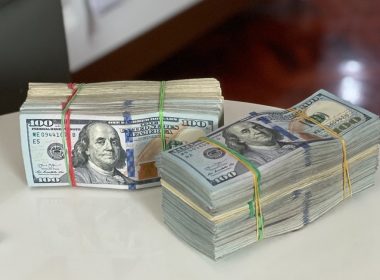 The death last month of former Congressman Fernand St. Germain has gone all but unnoticed. The world’s most widely read business newspaper, The Wall Street Journal, couldn’t spare even a quarter inch of column space to the life of the former House banking chairman who helped usher in the golden age of financial deregulation. And almost none of the major TV and cable networks acknowledged his passing — or, more specifically, his political life that made his death so noteworthy. While it is true that, The New York Times, regarded arguably as the newspaper of record, did do a write up, its headline touting St. Germain’s tie with the “S.&.L. Crisis” buried the true lead of his life and impact. So why should this 14-term New England congressman be remembered?
The death last month of former Congressman Fernand St. Germain has gone all but unnoticed. The world’s most widely read business newspaper, The Wall Street Journal, couldn’t spare even a quarter inch of column space to the life of the former House banking chairman who helped usher in the golden age of financial deregulation. And almost none of the major TV and cable networks acknowledged his passing — or, more specifically, his political life that made his death so noteworthy. While it is true that, The New York Times, regarded arguably as the newspaper of record, did do a write up, its headline touting St. Germain’s tie with the “S.&.L. Crisis” buried the true lead of his life and impact. So why should this 14-term New England congressman be remembered?
Of course, what most appear to have missed is the role St. Germain played in the making of the greatest global financial collapse of our time: the subprime crisis. In an era in which the legal and penal systems have held relatively few to account for contributing to this man-made economic disaster, the media has left off the hook St. Germain, who was the legislative godfather of the subprime industry. As House banking chairman in the early 1980s, St. Germain coauthored the Garn-St. Germain bill with Utah Senator Jake Garn. Together, they gave the nation many of the destructive financial instruments closely associated with subprime. These instruments included prepayment penalties, balloon payments, and adjustable rate mortgages. Each of these financial products increased the likelihood of foreclosure. Prior to Garn-St. Germain, products like balloon payments were legal only in a few states like California. After the Garn-St. Germain Act, mortgage lenders could now market and spread these products all across the nation. Thus, the act allowed a potentially isolated issue that could’ve been quarantined to a handful of housing markets and made it a national and, ultimately, a global epidemic.
Various financial special interests took a special interest in the Rhode Islander. For instance, according to a study conducted by the non-partisan Public Citizen’s Watch of 231 members of Congress in 1983, St. Germain received nearly nine times more than the average campaign contribution amount from political action committees. St. Germain would be hounded out of office, losing his reelection bid in 1988. The Rhode Island House Democrat was undone partly by a Reagan administration Justice Department probe. The DoJ claimed to have “substantial evidence of serious and sustained misconduct,” including St. Germain’s ongoing dealings for years with bank industry lobbyists. The probe was dropped after St. Germain lost. Thereafter, St. Germain slowly faded out of the political picture, dying in relative obscurity in the shadows of the greatest mortgage meltdown in US history.
Yet the impact of what St. Germain wrought continued well beyond his time spent in office. America’s racial minorities felt that legacy most acutely during the recent foreclosure crisis. At the height of the subprime frenzy, African Americans and Latinos were more likely to receive these toxic loan products (52 percent and 41 percent, respectively) than white Americans (33 percent), according to reports by the Urban Institute and Center for Responsible Lending’s analyses of 2006 Home Mortgage Disclosure Act data. And compared to whites, Asian Americans lost so much home equity because of the crisis that their net worth dropped from first to second behind whites. So while St. Germain has shuffled off this mortal coil the damage of the bill bearing his name will live on for decades to come as peoples of color in America can attest.
–Devin Fergus, PhD, Senior Fellow, Demos, Department of African American & African Studies, John Glenn School of Public Affairs
Ohio State University












